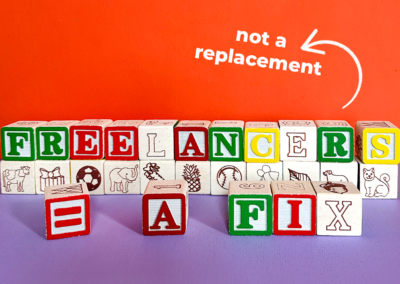Once upon a time there was a woman who spent 12 hours a week commuting to and from her office. Sadly, that woman was me.
What’s even sadder is that my story isn’t exceptional in any way, shape, or form.
In 2019, the average back-and-forth commute for US workers was nearly an hour. And a full 3% of the workforce (that’s 4.6 million Americans!) qualified as “super commuters,” spending three hours or more a day journeying to work and back. What’s so super about that?
For people whose jobs can’t be done remotely, there’s simply no other option. And sure, there are some people who enjoy their commute. But for many of us whose work happens via laptop and internet connection, commuting represents a waste of our most valuable resource: time. In the pre-Covid days, we accepted it with a shrug of our shoulders: “It’s just how it is.”
Because we couldn’t afford to live closer to work.
Because we preferred to live in places where we felt a sense of community.
Because our cities and states hadn’t invested in efficient public transit. (Don’t get me started.)
Because our particular jobs were too big a part of our identity to let go of. (Guilty.)
Because finding a new job is hard, even if you so badly want to.
Because it’s just the way things have always been done.
Long commutes drive burnout
My Monday to Friday played out like this: Get up. Get ready. Make breakfast. Pack work bag. Run to the train. Jam into the train. Catch another train or bus (and pray it won’t be late). Complete the 11-mile gauntlet and arrive at work. Work for eight or nine hours (sad desk lunch included). Run to catch the bus so you don’t miss the train. Get home. Try to muster up the energy to do much-needed freelance work/exercise/make dinner/spend quality time with family and friends. Attempt to get a decent night’s sleep (if anxiety permits). Repeat.
It was relentless and exhausting.
I knew life could have been so much more difficult, but I still felt myself being slowly pushed toward the cliff of burnout, my sense of well-being slipping away.
And I’m likely not alone. Researchers have found that a commute of more than 20 minutes contributes to burnout, and once that travel time hits 35 minutes, “employees are at increased risk of cynicism toward their job.” Even if someone is lucky enough to enjoy their work (me!), their commuting conditions can destroy their career satisfaction (also me!).
When the burnout obliterated my health and well-being and my pleas to work remotely once a week were rejected, I just gave up and put what little energy I had left into finding another job.
What business leaders are getting wrong with the return-to-office mandate
I sometimes wonder what would have happened if I’d had that job in our post-Covid era. Maybe the people in charge would have been less freaked out about the idea of me working remotely. Maybe they could have understood that having a few extra hours of free time in my week would have contributed immensely to my well-being and happiness. Maybe they would have seen me as a whole human, not just a worker bee.
But probably not. Because as time goes on, more business leaders seem to be developing amnesia, forgetting that remote work actually worked pretty well for them when it was the only way to get stuff done. We’ve all seen the headlines about CEOs demanding people return to the office, once again prioritizing real estate and the “optics” of in-person work over compassion and respect for the people who make up their companies.
In this year’s Rosie Report study, 54% of marketers said they weren’t consulted before their company made a decision about returning to the office. Perhaps company leaders knew that if they asked the question, they wouldn’t like the answer: 77% of our survey respondents said they still prefer to work remotely.
When you suddenly have 10 or 12 hours of extra time each week, life feels richer. And it turns out, 55% of fully remote US workers agree: they said “they’re willing to take a pay cut to keep working from home.”
The costs of RTO
Returning to the office isn’t just about enduring a long commute, though. It’s about changing the entire rhythm and financial calculus of your daily life in a way that gives a lot more of it to work rather than to life.
For most, it means spending more on gas or public transit, or needing to pay for child or elderly care that wouldn’t otherwise be needed or could at least be reduced. (The average US family spends a whopping 27% of their income on child care.) In our Rosie Report survey, 60% of respondents who transitioned from fully remote to either hybrid or completely in-office work had to adjust their budget due to commuting, care, and other costs.
Beyond the financial factor, the return-to-office mandate also steals away downtime that enriches our lives. 47% of our survey respondents who returned to in-office work said they had to cut back on hobbies and volunteering. As Kelsey Alpaio reports in the Harvard Business Review, “One study from the Society of Behavioral Medicine suggests that people who take part in leisure activities have fewer negative emotions and are less stressed. The study even found that our heart rates are literally lower when we engage in our hobbies.”
Aren’t those the people you want driving your company forward?
A people-first approach is the way forward
A couple months ago, I got a taste of the in-office life again when I traveled from my suburban area to downtown for a three-day conference.
At first I thought, “This isn’t so bad.”
But it turned out, I was the one with amnesia.
With three hours of daily travel, I barely ate dinner (does a slice of train-station pizza count?), hadn’t gotten to exercise or go for a nice, long walk (goodbye, endorphins), and spent virtually no time with my loved ones or engaging with my community (well, who needs ‘em?). I guess I finally qualified as a super commuter, though.
Before you cue the violins, hear me out.
I know that not everyone is like me, and that’s exactly the point. Just because a group of people come together to work at the same company does not mean our lives and needs are the same. Some people aren’t bothered or stressed at all by a long commute. Some thrive going into the office. Some feel better working from home. Some people like a bit of both—or prefer an Airbnb in a far-flung locale. In certain cities and regions, commuting just isn’t as time consuming or expensive. And of course, for some people living with disabilities or serious health conditions, commuting and working in an office is not even an option.
The reality is that the work we do is not one-size-fits-all and the where and how of work doesn’t need to be either. Rather than creating mandates, company leaders should be creating compassion—and building the flexible work structures that allow that compassion to be put into practice. They should make it easier for us to shape our work around our individual lives, not the other way around. Those that do will have a happier, healthier, and easier-to-retain workforce—and in the end they’ll realize that’s a boon to their bottom line, too.



